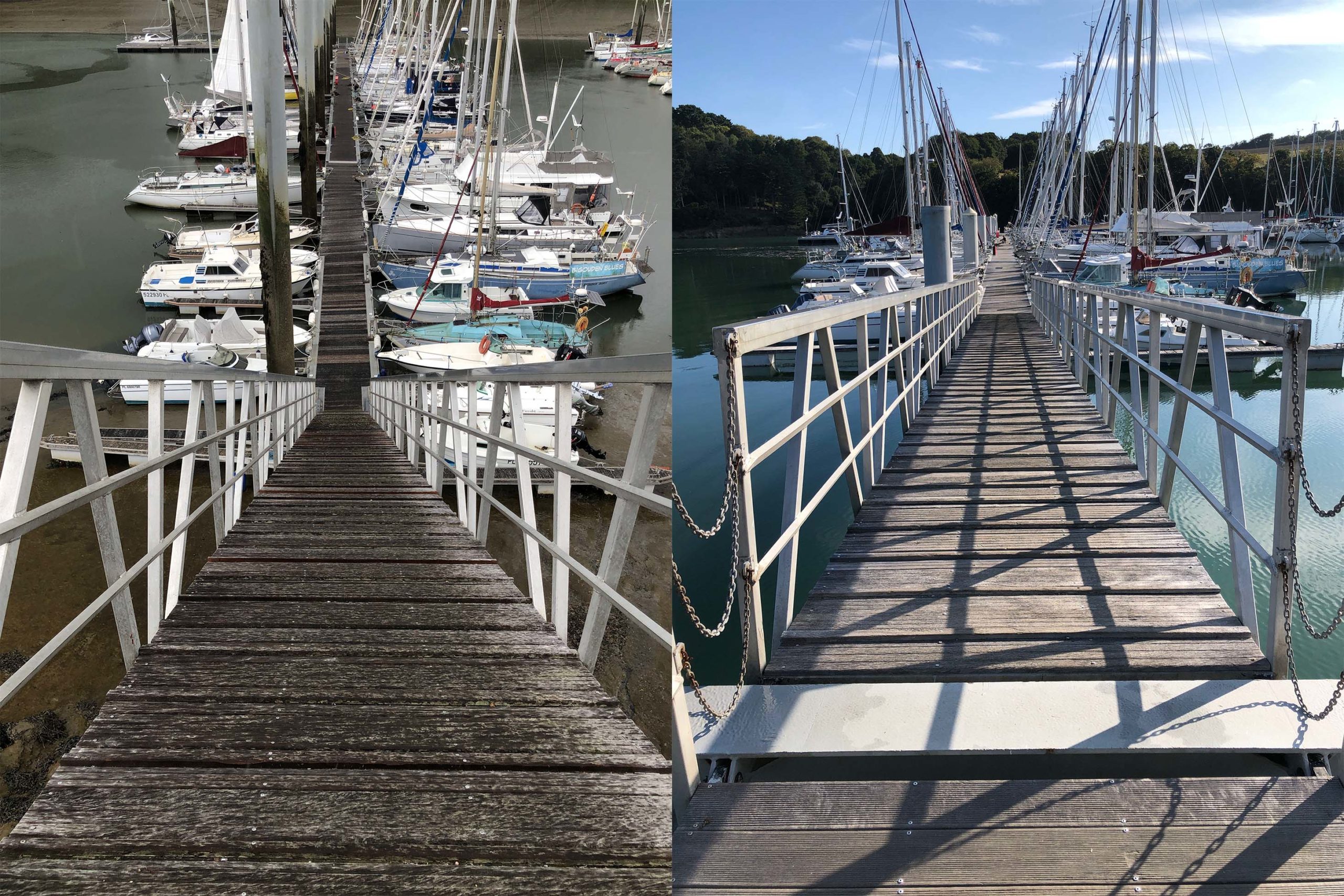Have we mentioned the tides in this part of the world? We were in the Saint-Malo neighborhood, which has the highest tidal changes in Europe. During Spring Tides, the water level can change up to 13 meters (42 feet) every 6 hours. This is no joke! The volume of water coming and going is astounding. Rivers start flowing the wrong way, with sea water flooding upstream, and currents can all but stop your boat if you hit them at the wrong time and place. For example, the currents created in the Bristol Channel (which is shaped like a funnel) average 3-5 knots and reach as much as 8 in tight spots and rapids (Called “Races” in English-speak). These currents change direction every six hours, as well. It is very important to keep them in mind when planning a trip out on the water. (Foreshadowing a future post perhaps?)
There are hundreds of identified forces involved in causing the movement of Earth’s waters but as most people know, the travel of the moon is a primary motivator and to some extent, the position of the sun also contributes. On the twice-monthly occasion when these celestial forces are in line with each other and combined (New Moon and Full Moon), they produce the monster Spring Tides. When they are offset by right angles from each other (half moons), the tides are less severe and called “Neap Tides” because the gravitational pulls are working against each other. Springs and Neaps occur in our Puget Sound home waters as well, with a fairly sizable tidal difference – but this was a whole ‘nother level.
We happened to be present to witness a spring tide on the Jaudy river, a +10.43M (34ft) high down to +0.97M (3ft) low. We tried to capture a few images of this phenomenon.
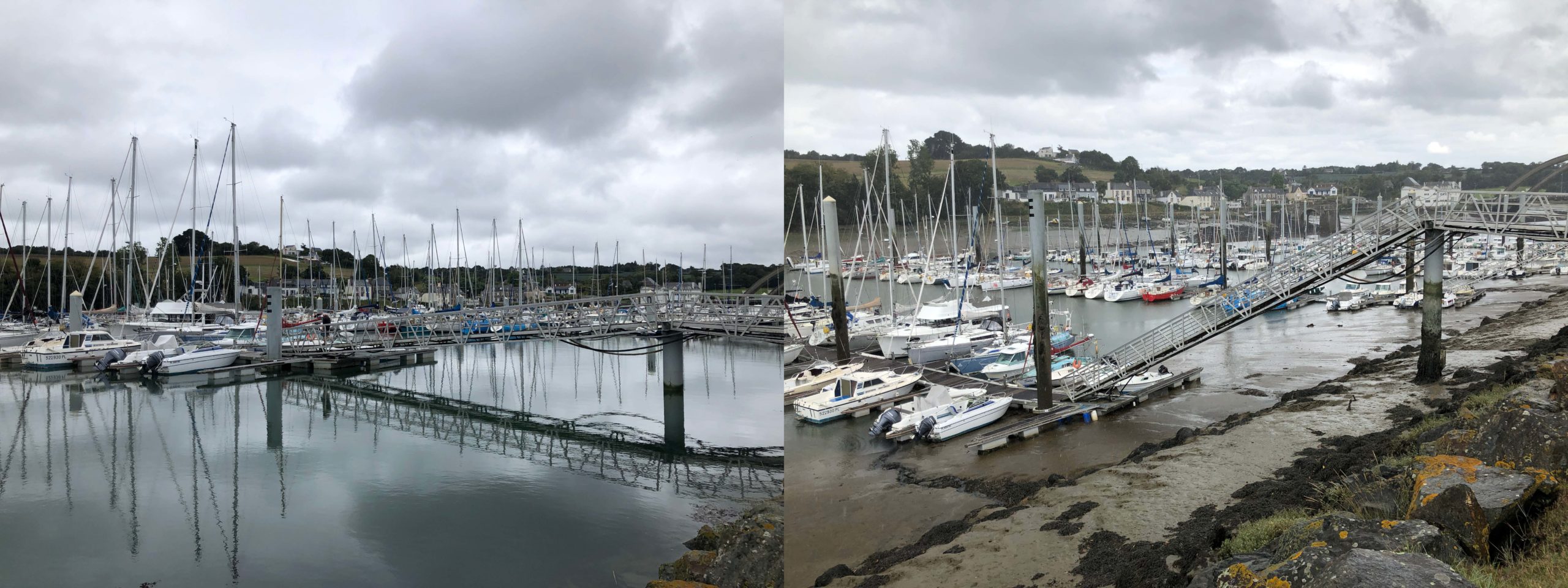
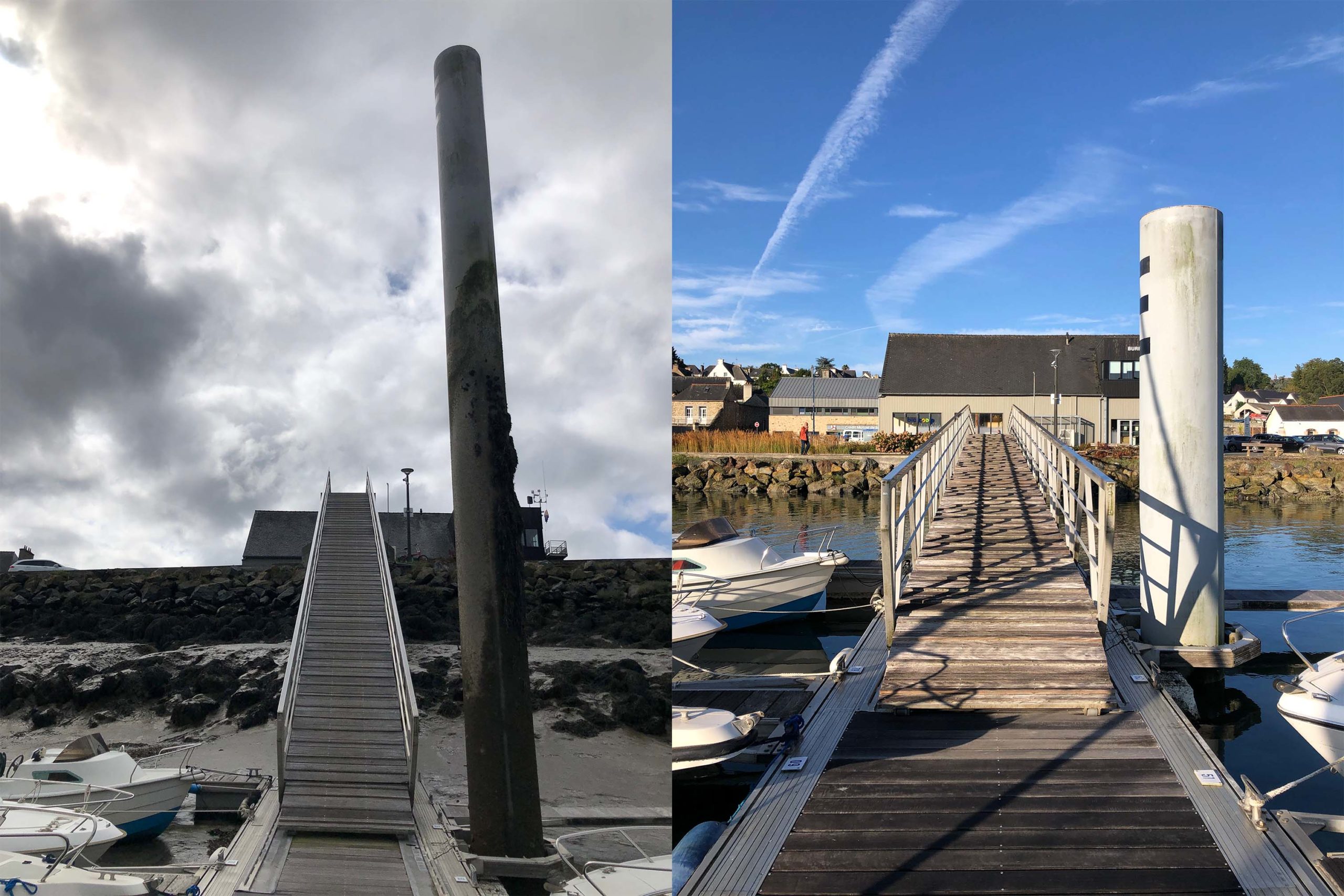
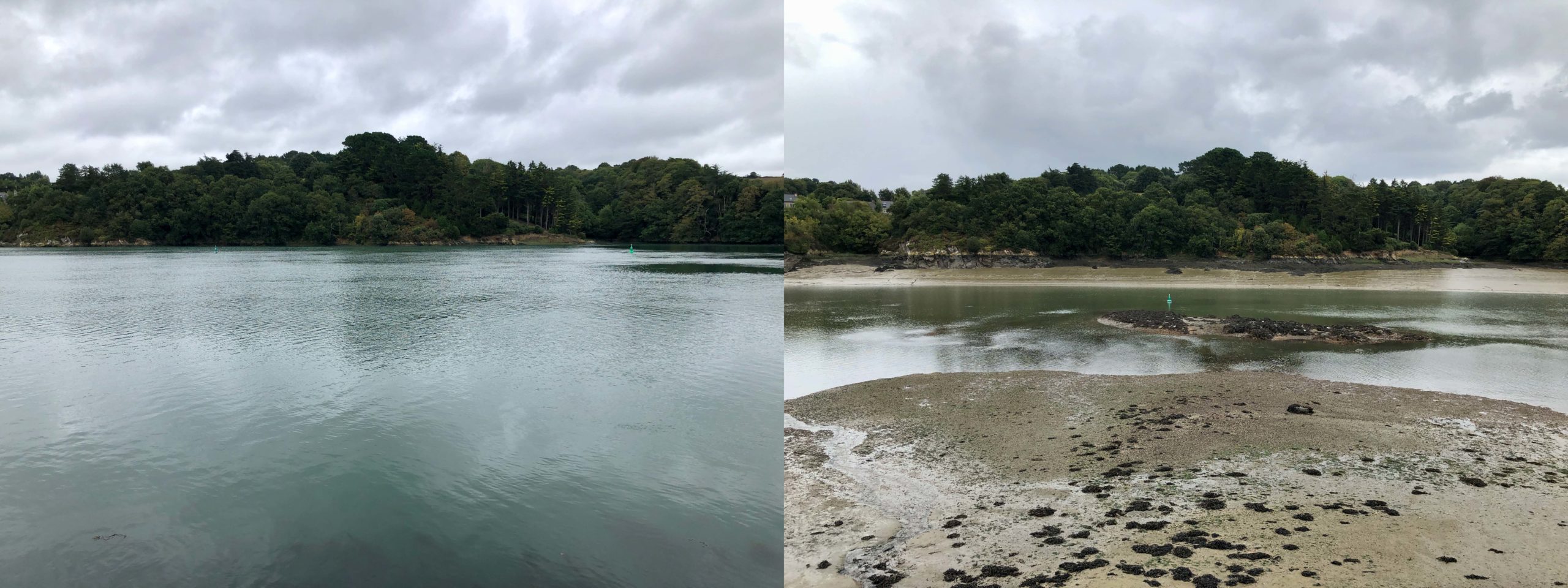
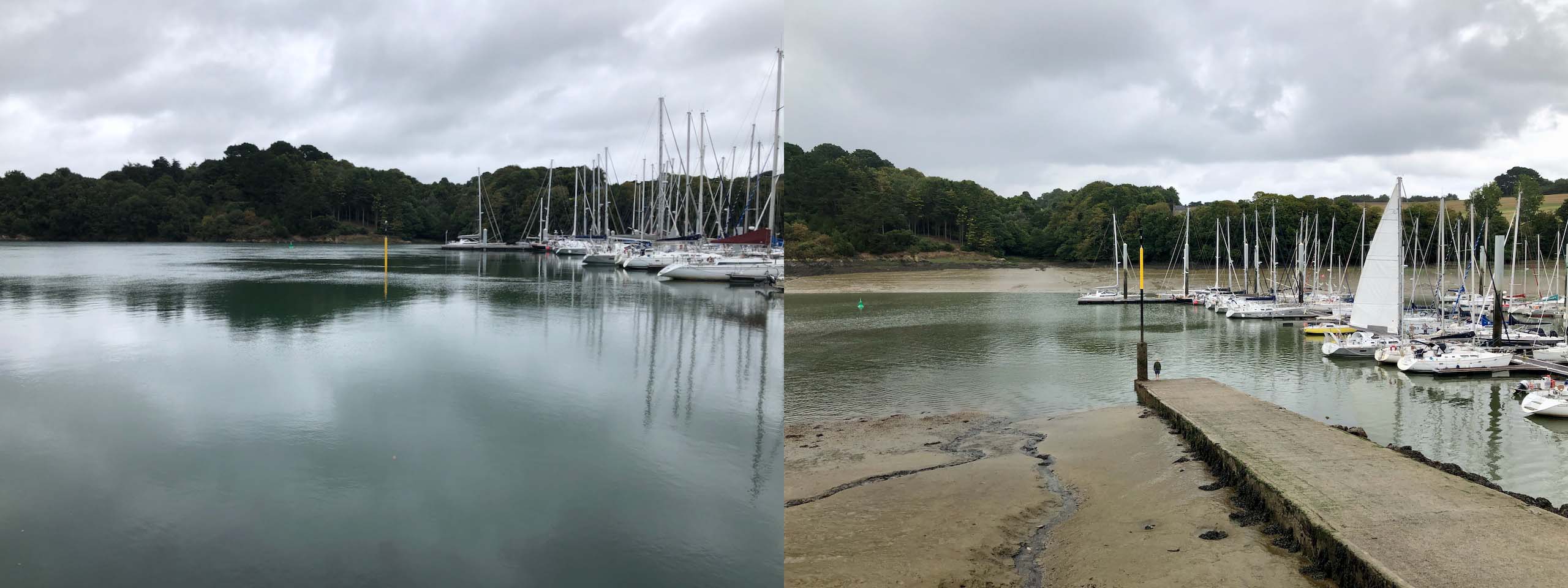
This is also the reason that most boats with lifting centerboards are made in France. It is a great asset to be able to “dry out” on land during these major tidal swings. We were ready to try it again, this time buddying up with our new friends of s/v Positive Waves.
On the outside of our little river estuary, facing the open English Channel are various rocks, sand bars and barrier islands. One such is called “Ile D’Er.” It and a smaller neighbor called “La Petite Ile” (Translation: “The Small Island” – how original) form a protective cove with a sandy bottom that drys twice daily.
The approach to this location is a little nerve wracking for the non-local pilot. Passing outside of the clearly marked navigation channel and over the top of rows of oyster beds, it requires that you time the maneuver in the vicinity of high tide or you risk stranding aground along the way in. With a look-out on the bow, we carefully thread the needle, avoiding rocky hazards barely visible from the surface. The final hurdle is a “sill” of rocks stacked maybe two feet high in a straight line along the sea floor across the entrance. The depth finder sees a jump and then you are clear.
We set the anchor in the middle of the small bay. In an hour or so the bottom of our boat touches sand and shortly after we are beached (beached-as!), the ocean recedes around the corner and disappears from view. The next few hours are “dry”. Positive Waves goes for a hike out to a nearby lighthouse. We scrub and scrape the marine growth off the bottom of our boat. Before dark we are floating again.
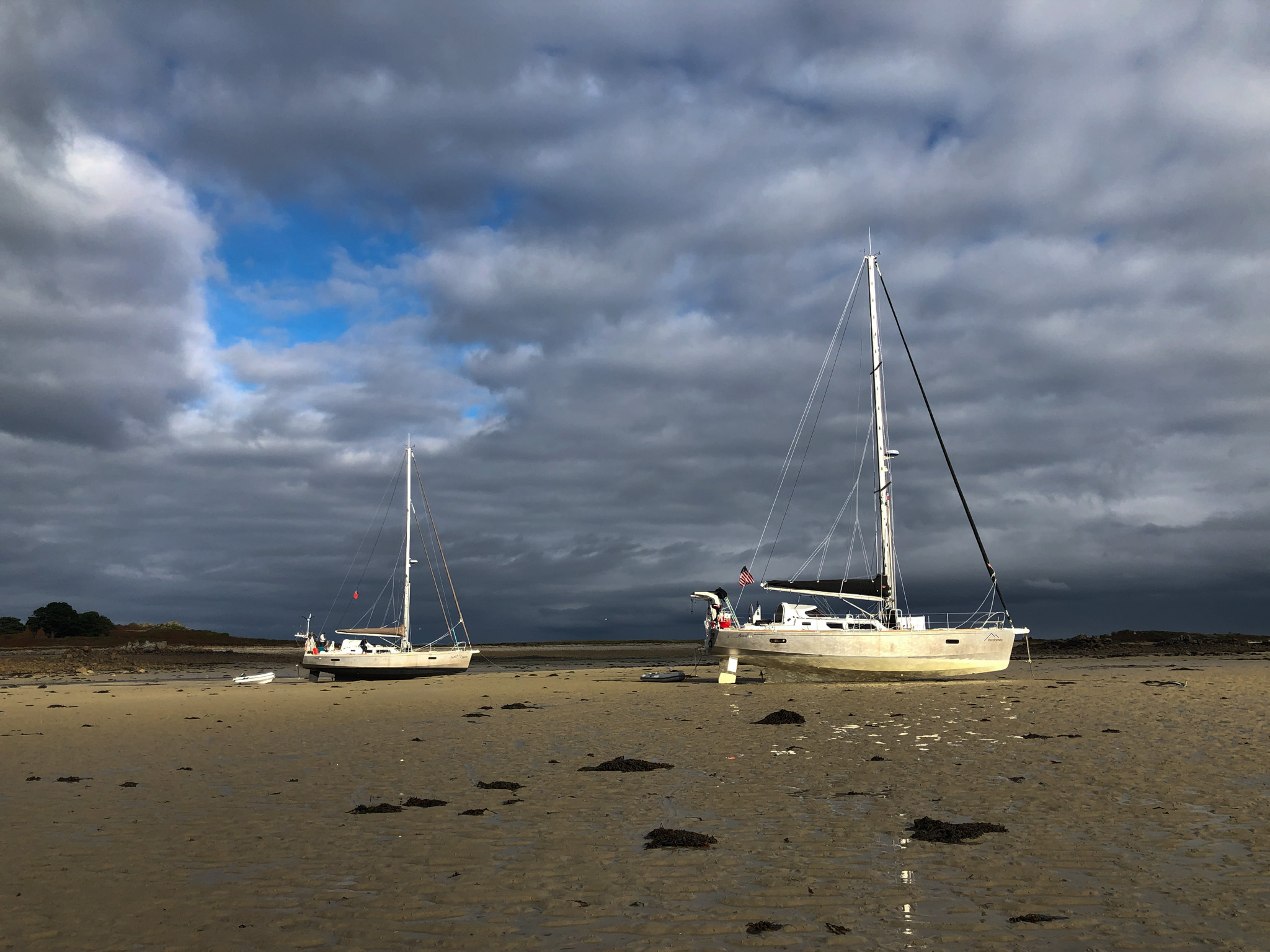
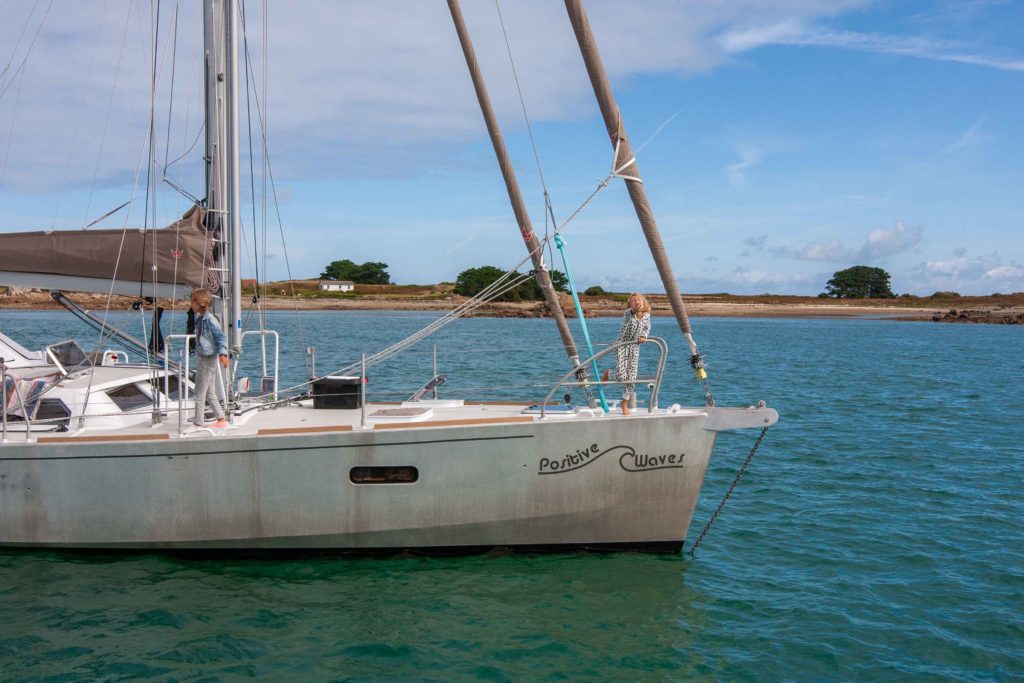
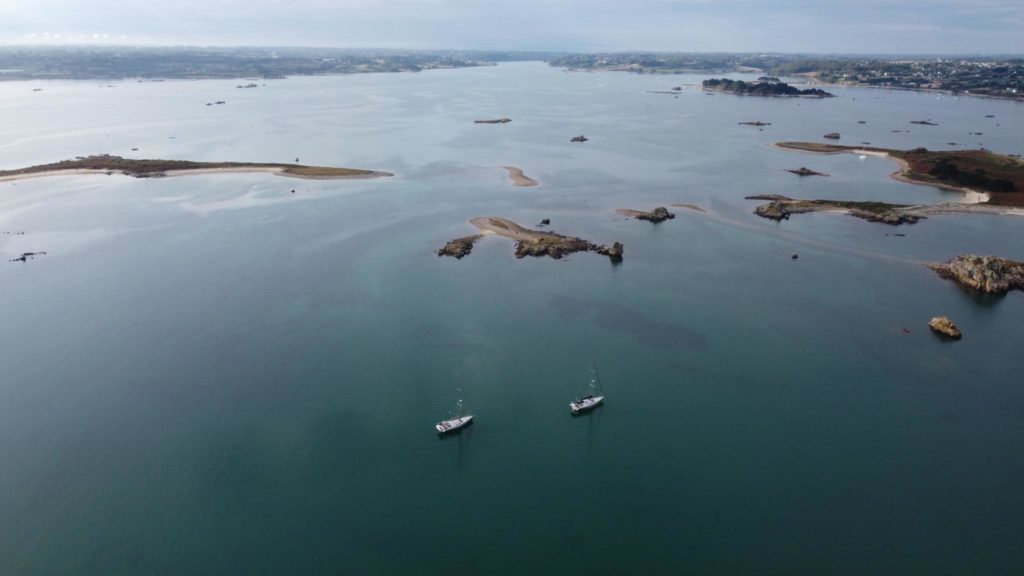

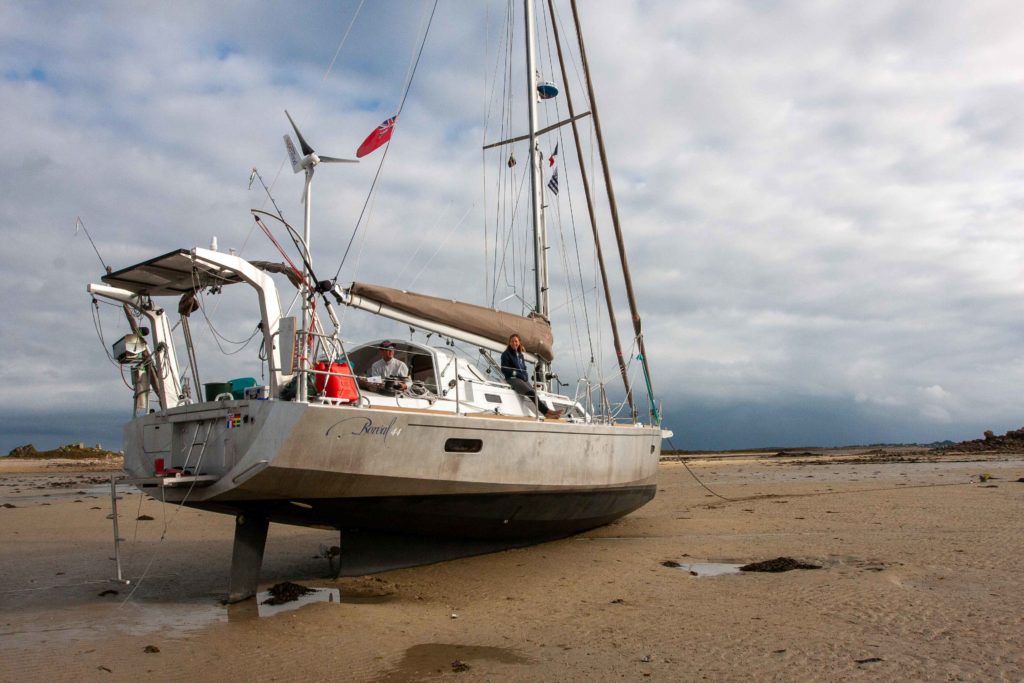
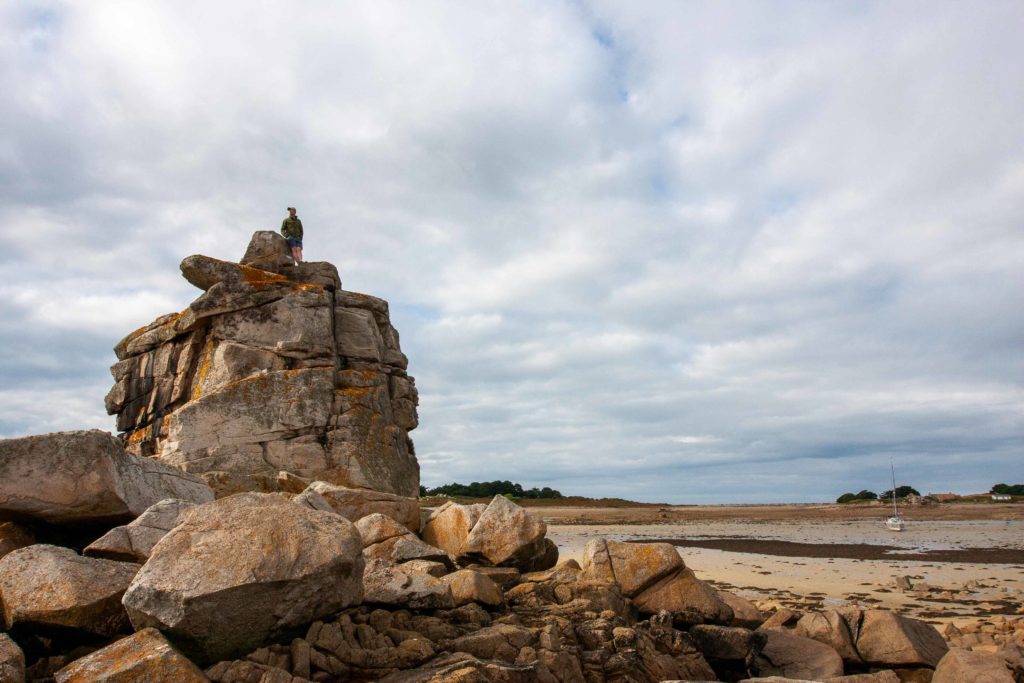
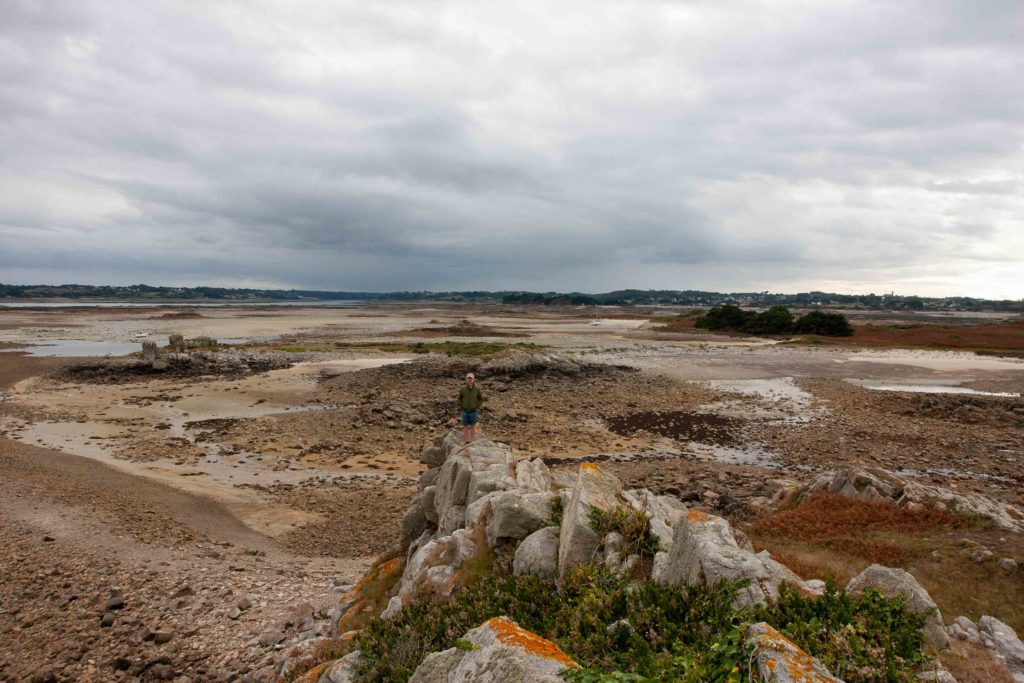
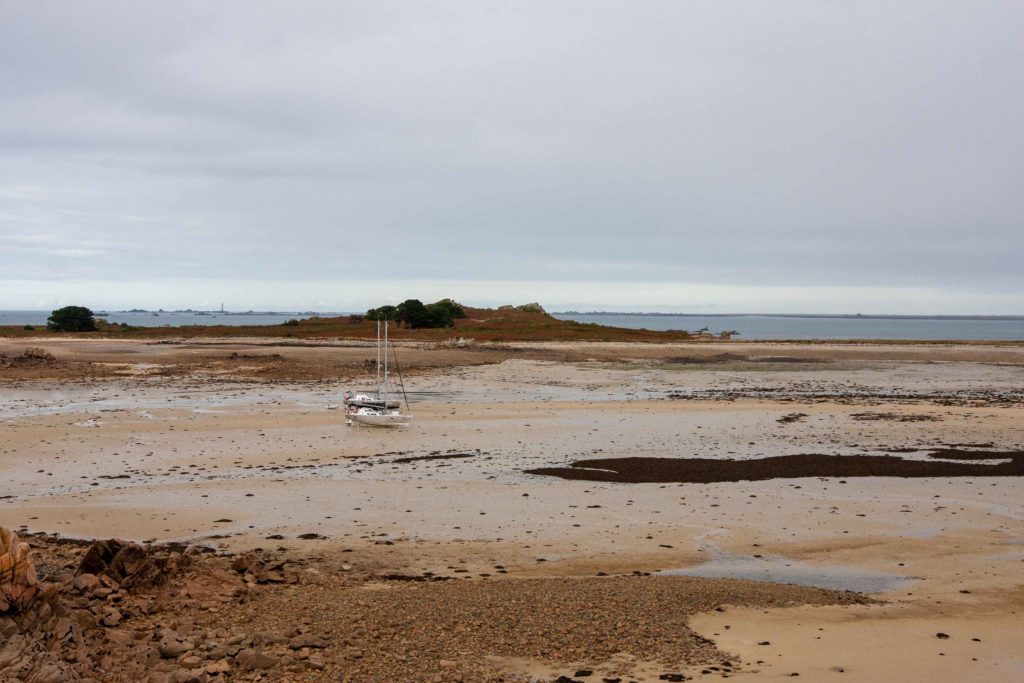
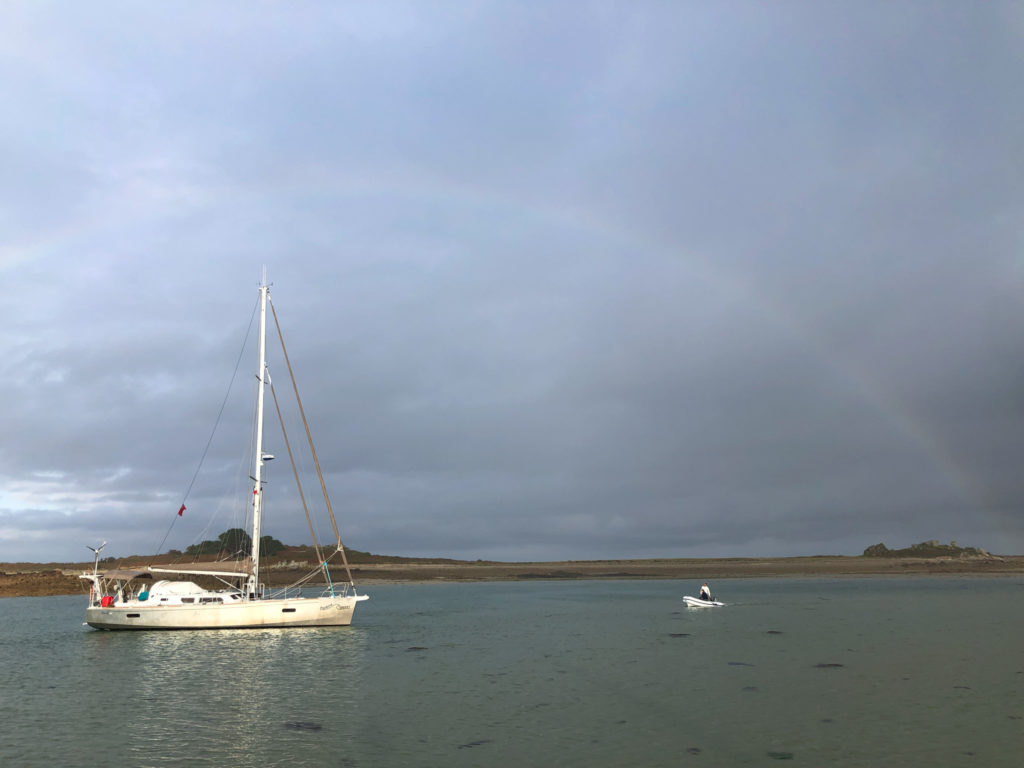
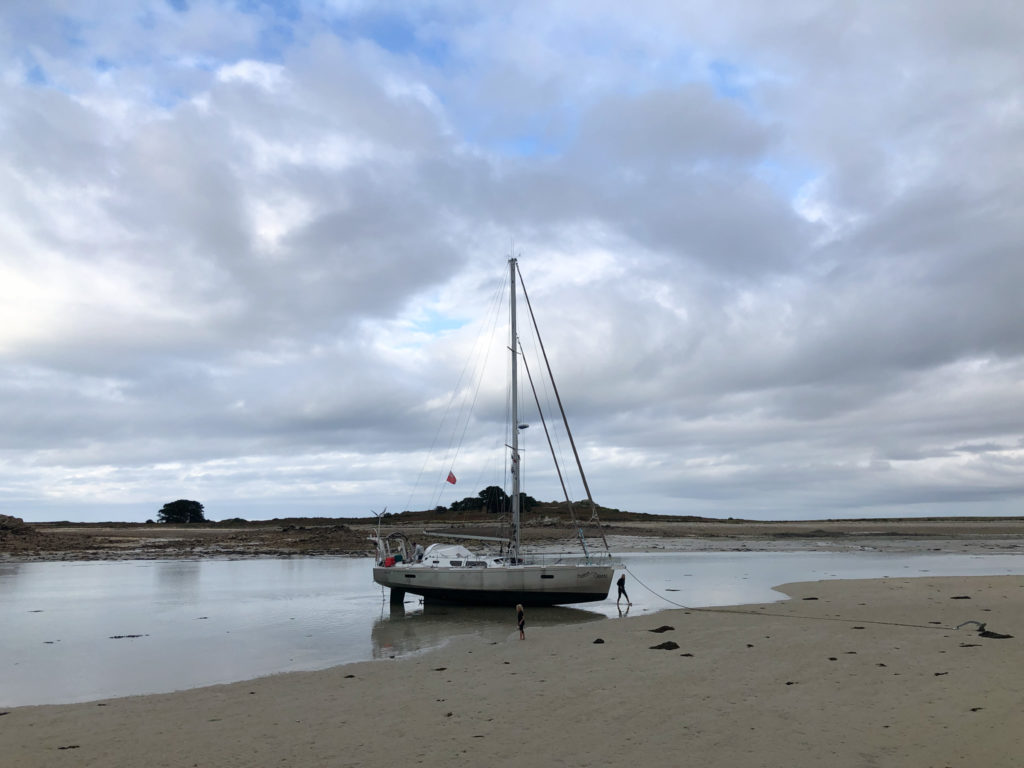
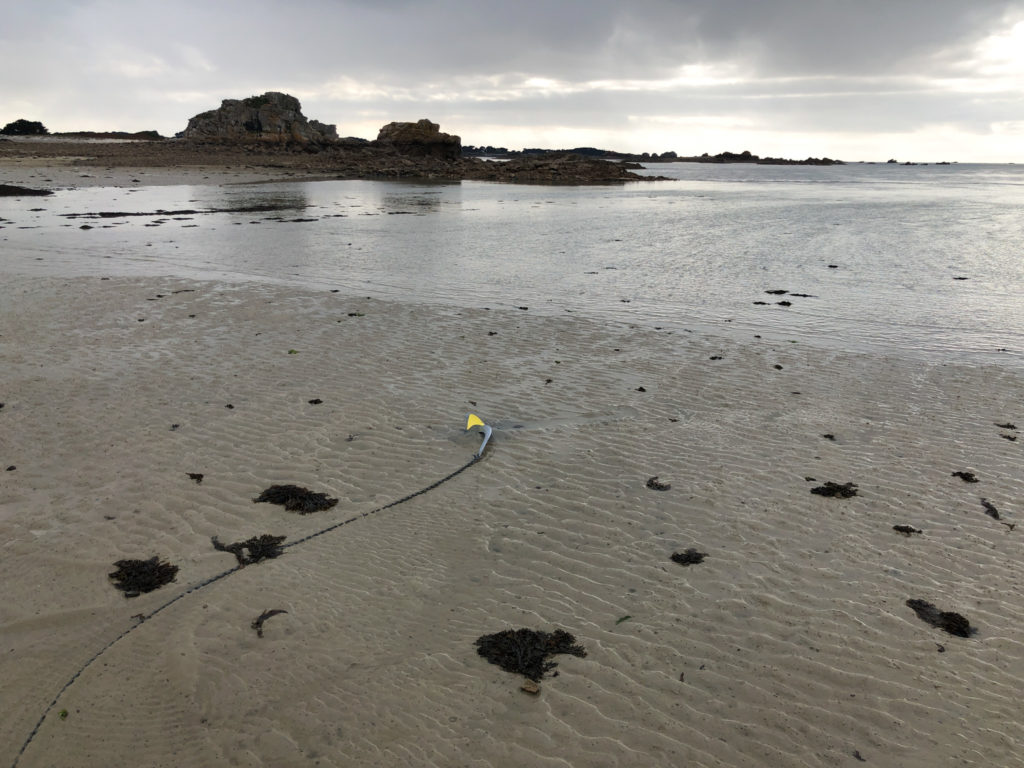
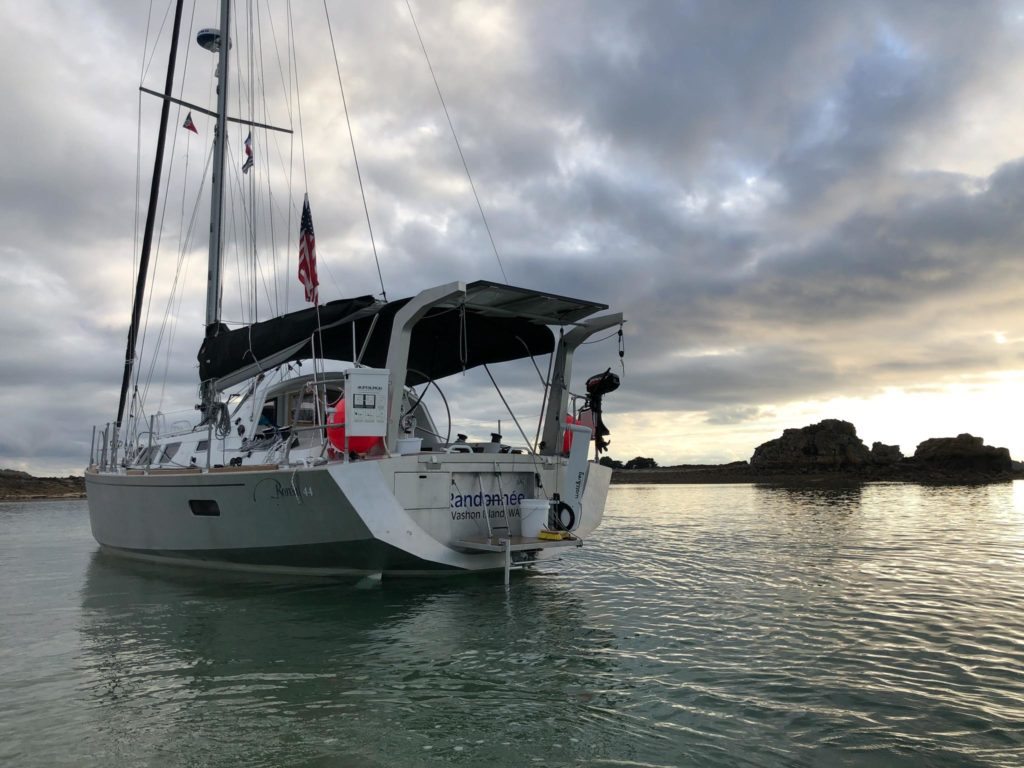
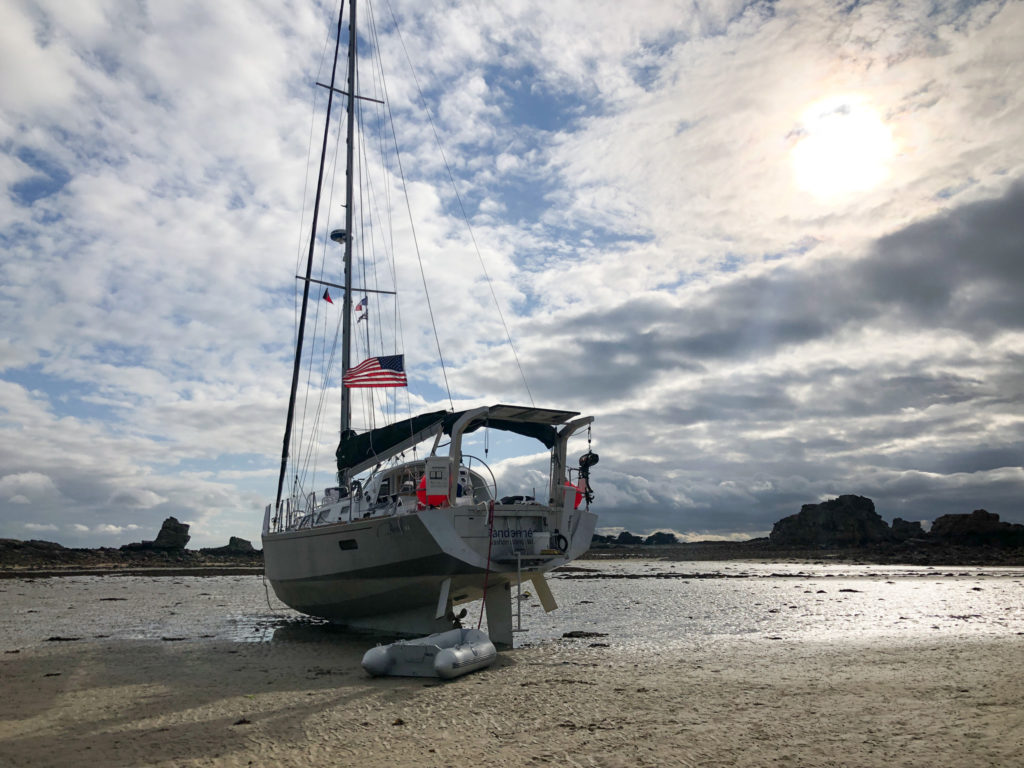
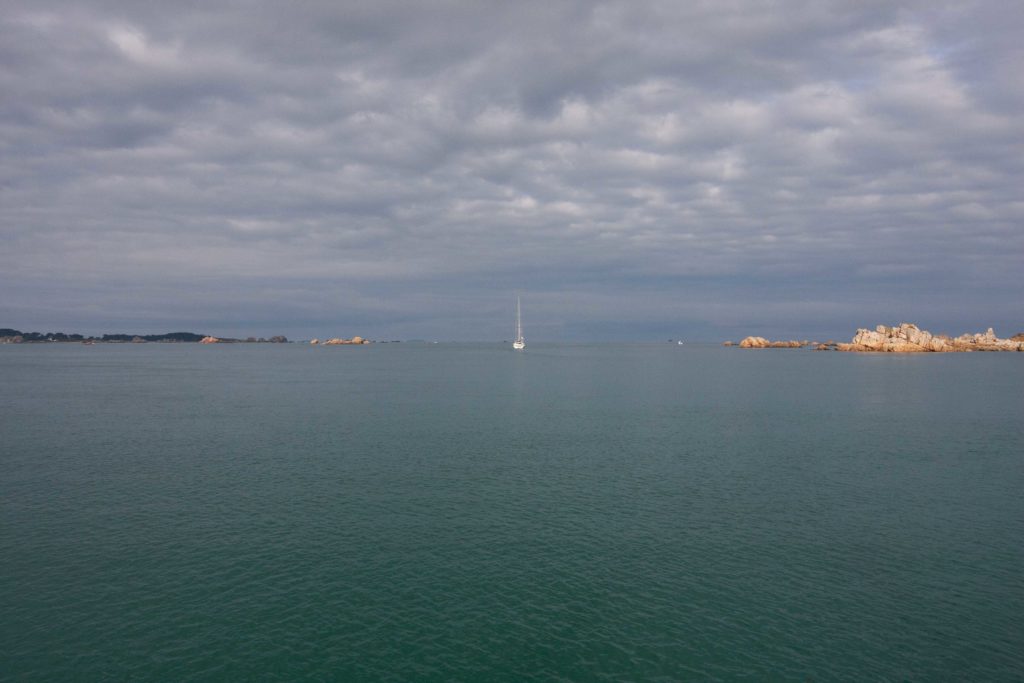
On another occasion visiting this place, Randonnée is solo now. With parts and tools in hand, it is time to install a rope cutter on the prop shaft. With a mind to the endless lobster/crab/shrimp pots scattered ahead of us along the Spanish and Portuguese coast, a cutter is essentially a rotary knife blade that turns behind the propeller, hopefully hacking away the fishing gear detritus if you happen to motor through any of it unawares, before it can lock up the drive shaft and cause damage.
The timing of low tide on this day is after sunset so I (Randy) set to work by headlamp. It is a committing task, requiring drilling and tapping three holes in the aluminum boss outside of the cutlass bearing and stainless driveshaft. The first one goes slow, trying to be careful with alignment and depth. By the second one, I realize the water is returning. (!) Suddenly it is lapping at my feet. As I cut the threads on the last bolt hole, sea water is washing around my knees, maybe a foot from my work space. I drive the bolts home barely in time, trying to get a last minute snug on all of the fittings and hardware before everything disappears under water. So this is what flooding is like . . .
